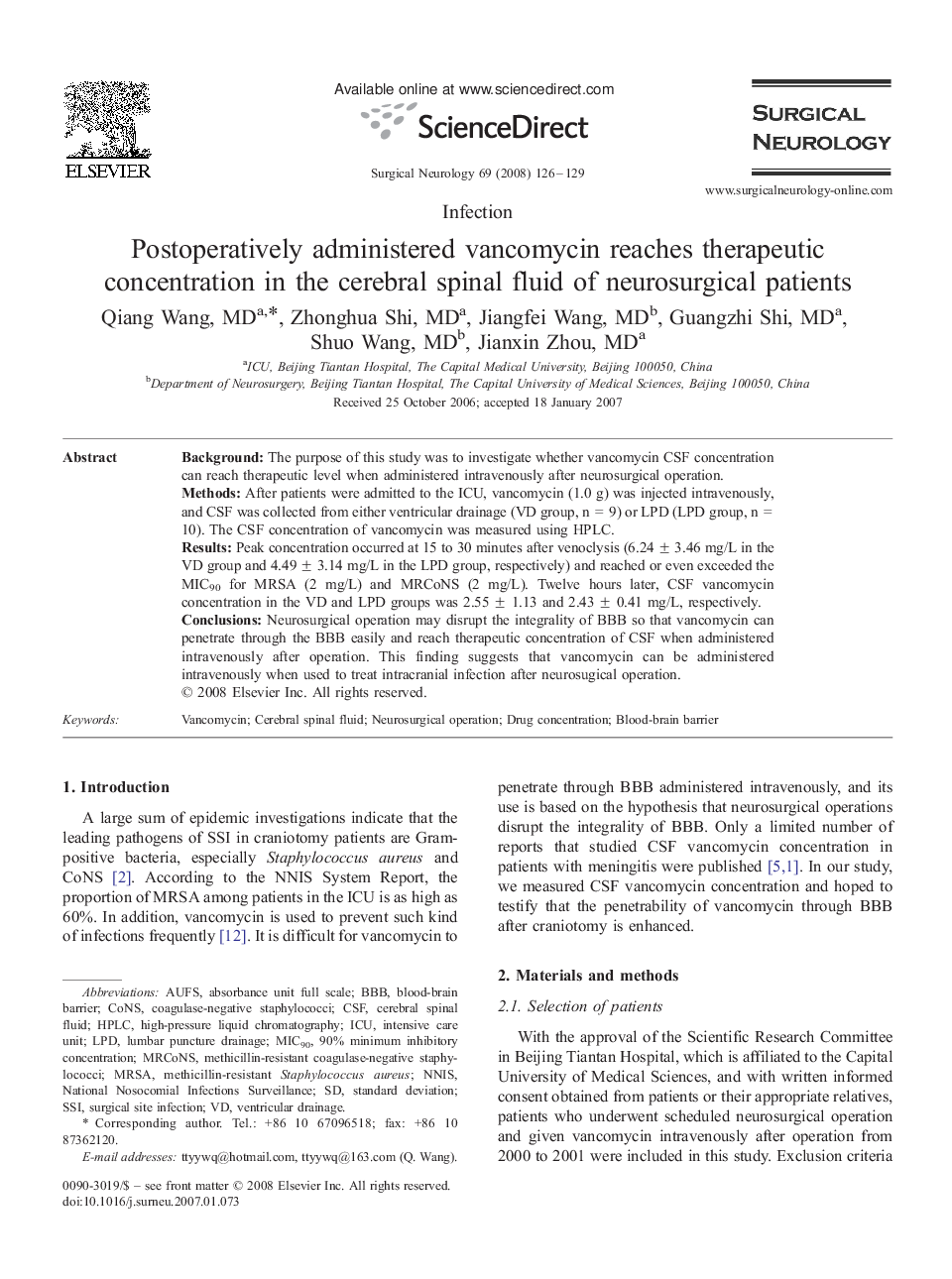| Article ID | Journal | Published Year | Pages | File Type |
|---|---|---|---|---|
| 3093127 | Surgical Neurology | 2008 | 4 Pages |
BackgroundThe purpose of this study was to investigate whether vancomycin CSF concentration can reach therapeutic level when administered intravenously after neurosurgical operation.MethodsAfter patients were admitted to the ICU, vancomycin (1.0 g) was injected intravenously, and CSF was collected from either ventricular drainage (VD group, n = 9) or LPD (LPD group, n = 10). The CSF concentration of vancomycin was measured using HPLC.ResultsPeak concentration occurred at 15 to 30 minutes after venoclysis (6.24 ± 3.46 mg/L in the VD group and 4.49 ± 3.14 mg/L in the LPD group, respectively) and reached or even exceeded the MIC90 for MRSA (2 mg/L) and MRCoNS (2 mg/L). Twelve hours later, CSF vancomycin concentration in the VD and LPD groups was 2.55 ± 1.13 and 2.43 ± 0.41 mg/L, respectively.ConclusionsNeurosurgical operation may disrupt the integrality of BBB so that vancomycin can penetrate through the BBB easily and reach therapeutic concentration of CSF when administered intravenously after operation. This finding suggests that vancomycin can be administered intravenously when used to treat intracranial infection after neurosugical operation.
